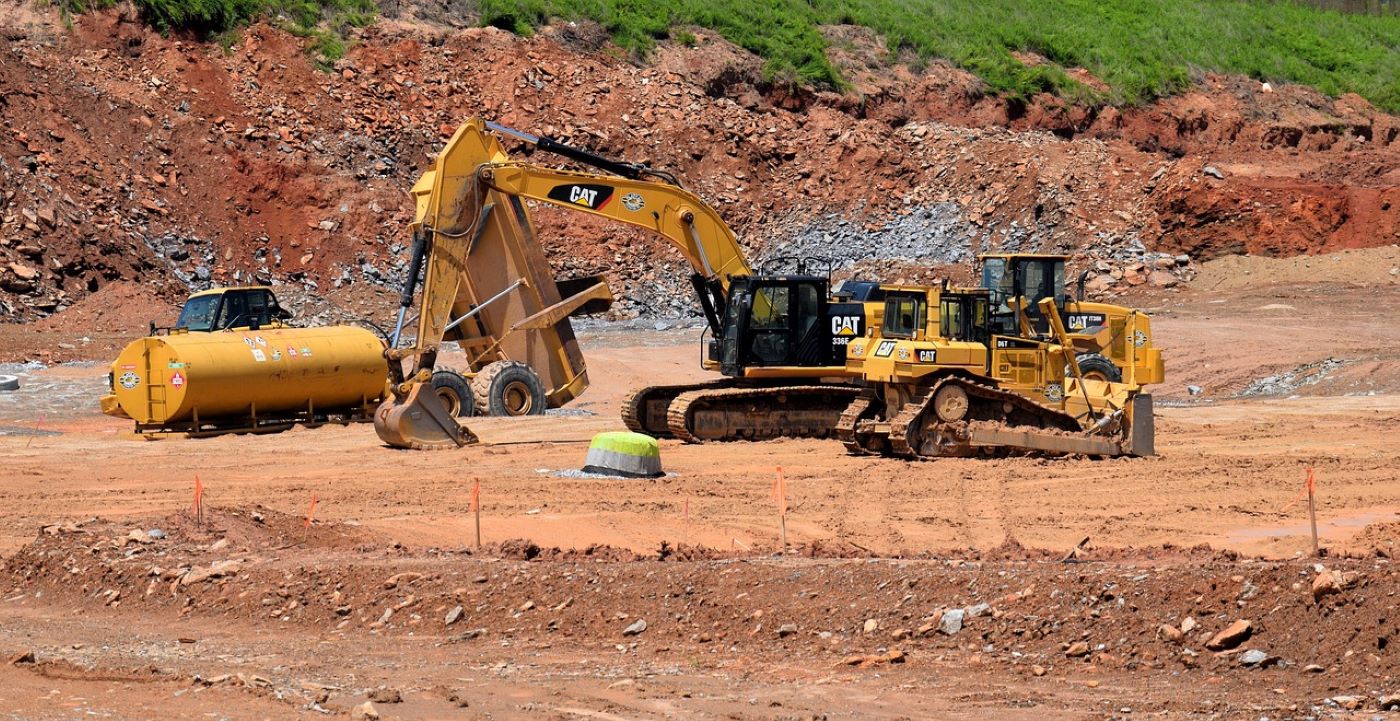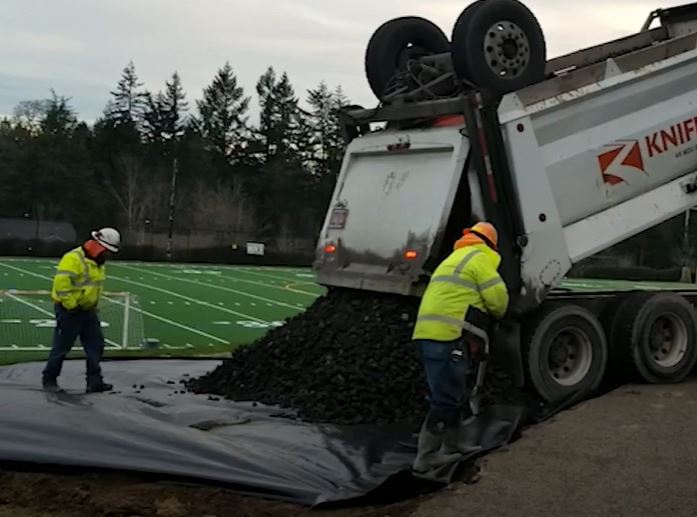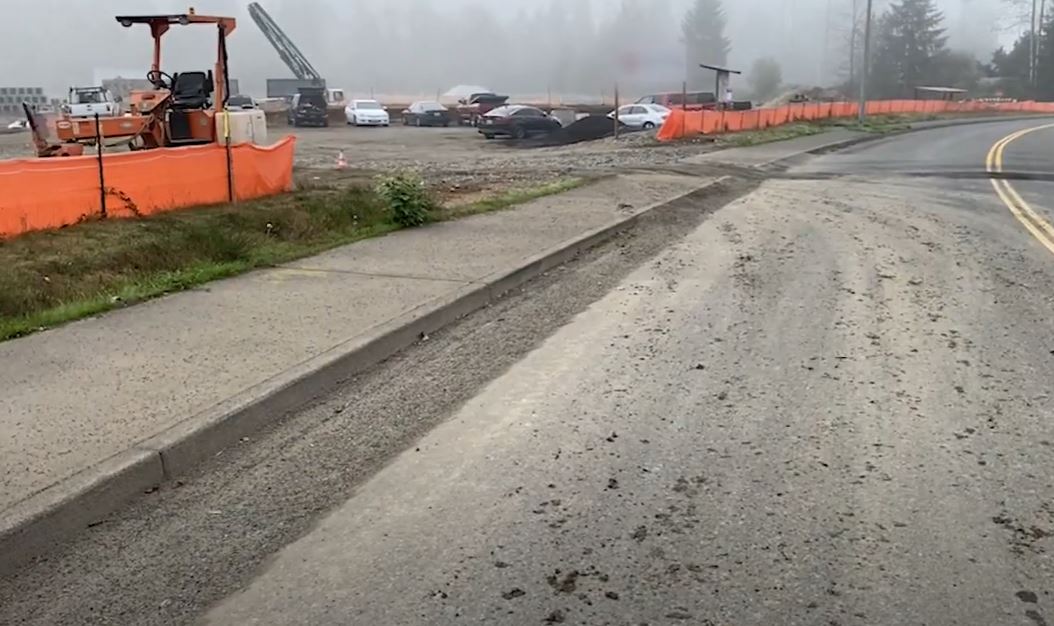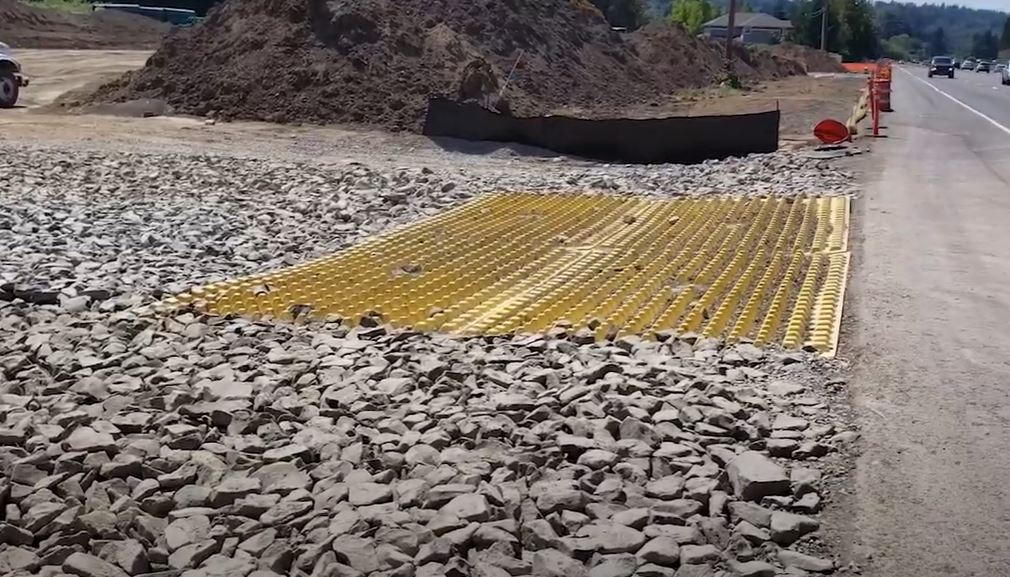
Construction BMP Guide: C105 Stabilized Construction Access
Stabilized construction entrances are established to reduce the amount of sediment transported onto paved roads by vehicles or equipment. This is done by constructing a stabilized pad of quarry spalls, or utilizing one of many available proprietary devices at entrances and exits for construction sites. Vehicles and construction equipment drive over these areas and have the sediment knocked off their tires before entering a roadway.
*The contents of this guide are to provide a general overview only. It is the user’s responsibility to ensure all BMPs utilized on their project meet the requirements of their state and local jurisdictions.

Stabilized Construction Entrance Installation:
- Construction entrances should be a 12-inch think pad of 4–8-inch quarry spalls *Note Confirm quarry spall specifications with your local jurisdiction
- Use a 4-inch course of asphalt treated base or existing pavement as a base
- A separation geotextile shall be placed under the spalls to prevent mud and other fine sediments from pumping up into the rock pad
- Restrict access to construction entrance using fencing
- Construct on a firm, compacted subgrade to increase effectiveness and reduce maintenance

Stabilized Construction Entrance Maintenance:
- Regularly inspect that entrance is preventing sediment from being tracked onto the pavement
- Remove any tracked-out sediment by hand sweeping or the use of a high-efficiency sweeper truck
- Any quarry spalls loosened from the pad that end up on the roadway shall be removed immediately.
- Watch for vehicles entering the worksite from areas other than the construction entrance, and block these points with fencing



